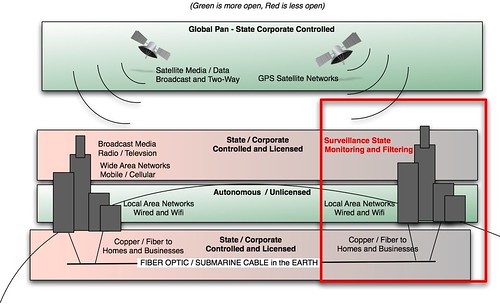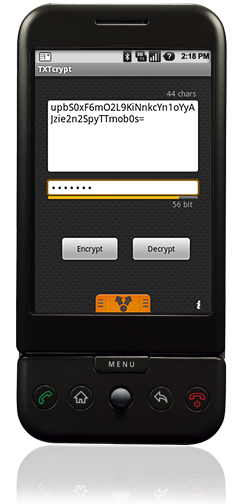Week 4 – September 29 Mobile Campaigns from Text to Video: Texting, Ringtones and Camera Phones
Homework:
1) Create diagrams for your cause proposal based on the pyramid and pillar diagrams below.
2) Read the following:
- Gene Sharp, There Are Realistic Alternatives (PDF), The Albert Einstein Institution, 2003
- CANVAS Core Curriculum: A Guide to Effective Nonviolent Struggle (PDF), Centre for Applied Nonviolent Action and Strategies, Belgrade, 2007 (Chapter 3: Pillars of Support)
- Robert L. Helvey, On Strategic Nonviolent Conflict: Thinking About the Fundamentals (PDF), The Albert Einstein Institution, 2004
3) Read this post: Turn Your Blog Into a Native iPhone App in 10 Steps
4) For those interested in Android development, you should download gReporter open-source project and get your development environment setup -> http://developer.android.com/
Here’s the audio from the first hour of class, listen to this while reviewing the text below:
Class begin with a discussion on the use of strategy from the school of non-violent direct action, as means for planning and designing mobile applications for social activism. In other words, approach mobile application design from a typical “product” or “consumer” perspective or even a thoughtful usability/design approach, may not make sense when it comes to trying to implement something to create actual change in society.
In the case of social activism, you must developer a strategy to affect an existing regime. A regime can represent a corporation, government, a specific issue, social prejudice, or any existing state of mind or structure in society that can be targeted for change. A long term strategy is necessary to keep focus on the goal.
Opportunities present themselves over time through the effort to affect change on an issue. They can be expected or unexpected. Your effort should be positioned to take advantage of them as they emerge.
Tactics are short term actions implemented to take advantage of opportunities. They can be of varying length and intensity, but must be aligned with your overall strategy. Multiple tactics can be used at once.
You must also consider deeply the structure of the existing regime you are targeting. Here is a typical governmental regime and the “Pillars of Support” which actually make a government function.
However, this same concept could be applied to more mundane campaigns such as increasing efficiency in shopping or promoting the purchase of only pasture-raised eggs at the Park Slope Food Coop:
These timeless approaches to campaigns, drawing from the likes of Sun Tzu’s “Art of War” as much as from the non-violent victories of Gandhi and Mandela, are useful and powerful constructs within which any campaign must be processed. More specifically, for mobile application design, it is critical that you consider a non-corporate, non-consumer perspective as part of your design process, and ideally throughout your campaigns efforts.
Many thanks to The International Center on Nonviolent Conflict for their great instruction, content and overall efforts in this area of work and practice. Here are some related readings on these concepts and more:
- Gene Sharp, There Are Realistic Alternatives (PDF), The Albert Einstein Institution, 2003
- CANVAS Core Curriculum: A Guide to Effective Nonviolent Struggle (PDF), Centre for Applied Nonviolent Action and Strategies, Belgrade, 2007 (Chapter 3: Pillars of Support)
- Robert L. Helvey, On Strategic Nonviolent Conflict: Thinking About the Fundamentals (PDF), The Albert Einstein Institution, 2004
Guest Speakers
Week 4 features two excellent guest speakers. The first, Ben Stein, presented a US-oriented perspective through the work of his organization, Mobile Commons, and the many mobile advocacy campaigns they’ve implemented, including fighting for their own right to broadcast Pro-Choice SMS messages on the Verizon Wireless network. The second speaker, Tonyo Cruz, spoke to us in the midst of the Philippines cleanup from a large storm and flooding in which mobile phones were used to coordinate rescue and raise money. Tonyo’s perspective on the use of mobile in a more social, distributed, “peer to peer” manner, was an excellent contrast to the more centralized broadcast and web-based models that Ben described in the US.
Ben Stein – MobileCommons – http://www.mobilecommons.com
Mobile Commons’ customers are some of the leading cause-related organizations in the world. They use our web-based application to create mobile programs based around text messaging, voice calls, and web-based interactive components. With those tools, they raise money, build their lists, add interactivity to live events, get more support from the web, and make it easier for their ideas to spread.
Our second guest of the evening was Tonyo Cruz of TXTPower– Mobileactivist, writer and journalist Philippines – Since 2001, Tonyo has helped convene TXTPower, the leading mobile activist group in the Philippines and helped initiate its many high profile campaigns.




